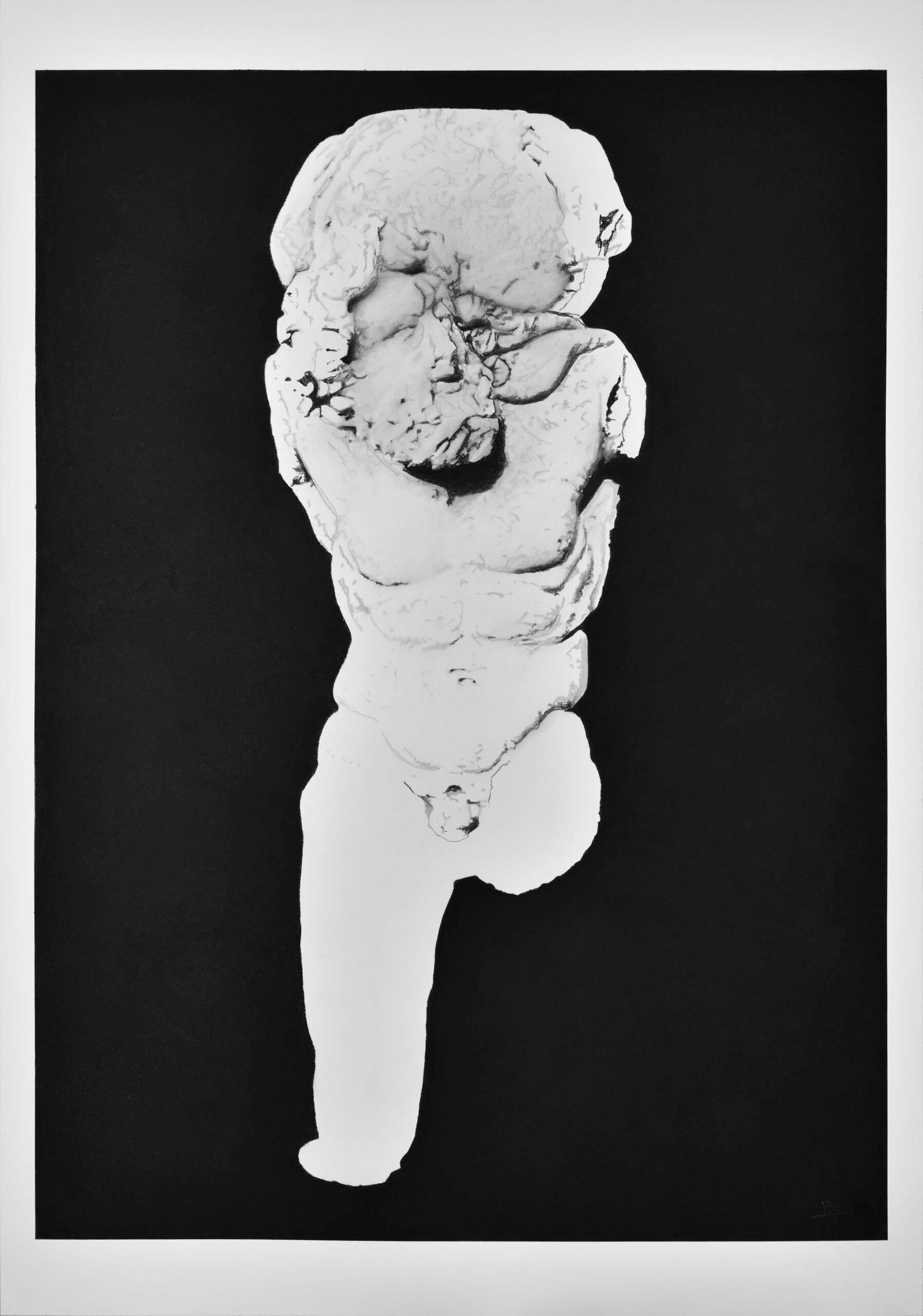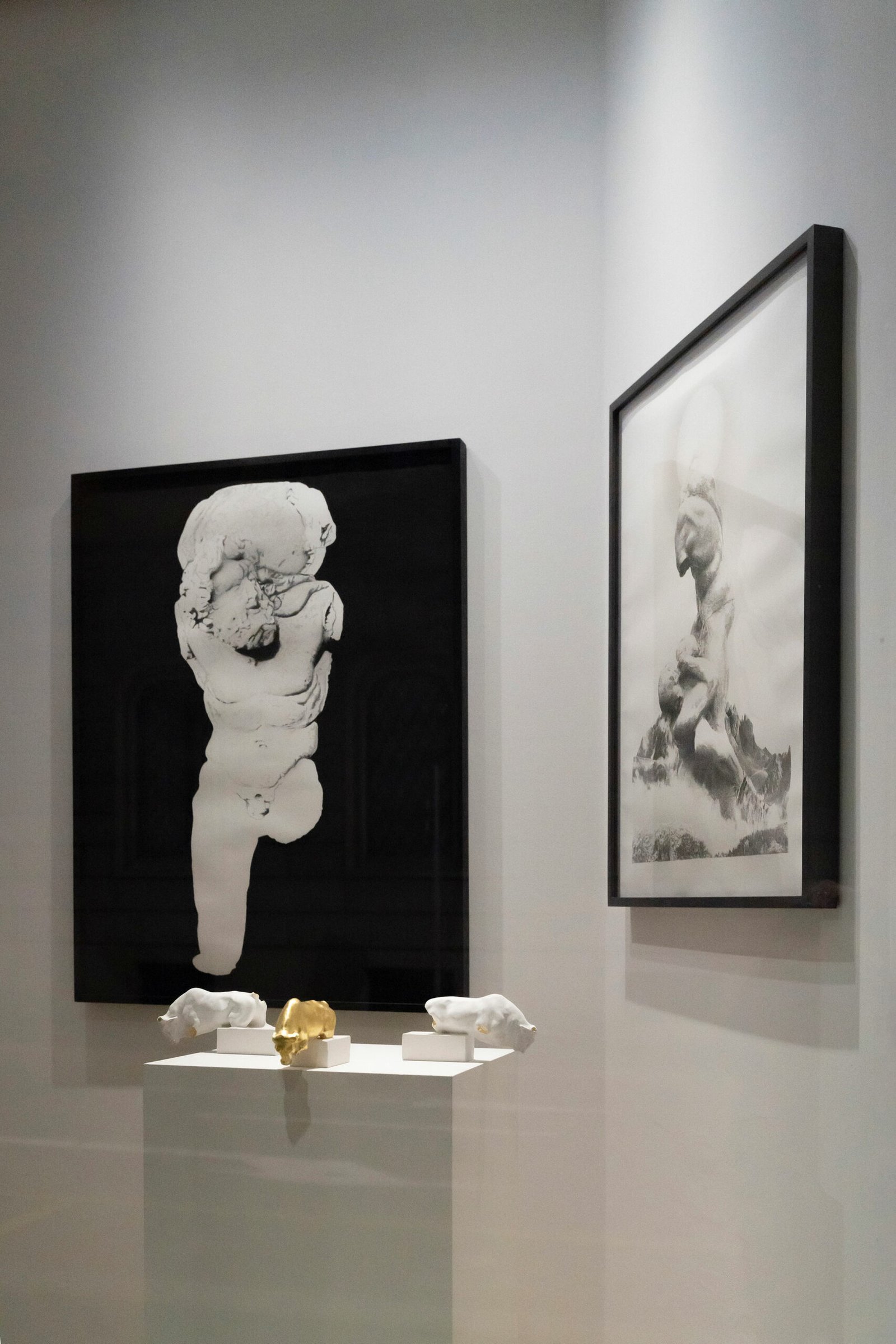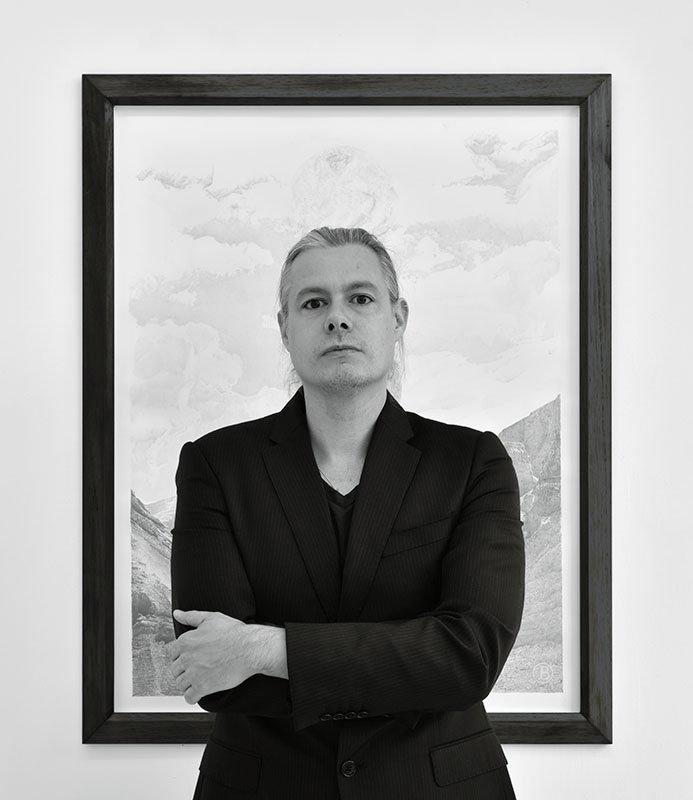The Shape of Gold. 12/12 – Jean Bedez
30.11.2021 – 31.12.2021
Jean Bedez
Sans titre [Untitled], I, II, III, 2021
plaster, gold
7 x 23 x 13 cm each
Atlas portant le monde [Atlas carrying the world], 2021
natural pigments and charcoal drawing on paper
133 x 98 cm
Hercule tuant Cacus avec une massue [Hercules killing Cacus with a club], 2021
graphite drawing on paper
108 x 83,5 cm
BUILDINGBOX presents, from November 30th, 2021 to December 31st, 2021, an installation of works by Jean Bedez (Colmar, 1976), the twelfth artist of The Shape of Gold, the annual exhibition project curated by Melania Rossi, which investigates the use of gold in contemporary artistic research through the works of twelve artists invited to compete with the chosen theme. The installations are visible 24 hours a day, 7 days a week from the window in via Monte di Pietà 23 in Milan. On display are three sculptures made especially for the show and two large drawings, one entirely in graphite, one with natural pigments.
Jean Bedez takes inspiration from the ancient world, mythology and classical Greek sculpture, taken as metaphors for creating works that reflect on the contemporary period, tackling ancient sculpture and drawing techniques. This work picks up the theme of the exhibition by evoking the myth of the Golden Age, a utopian dream that dates back to the dawn of mankind.
The Greek poet Hesiod (VIII-VII century BCE) was the first to write of the “golden race of man”, which lived in perfect harmony, with no troubles or suffering, receiving nature’s fruits spontaneously and in abundance. After Prometheus stole fire, and the gods took vengeance by creating Pandora, the first woman, humanity’s lineage began its progressive decline, with the bellicose silver race, the violent bronze age, the age of heroes, most of whom died in wars, and finally the iron race, the worst of all. This myth has inspired many literary and artistic creations: from Plato to Nietzsche, Michelangelo and Cranach, up to Gauguin, who physically went looking for the lost paradise in Tahiti, the idea has been taken up by philosophers, writers and artists as an allegory of the decadence of the present time compared to the past, as well as the constant search for an idyll of peace and prosperity that cyclically returns in every age.
In the works on display, Jean Bedez reworks images from classical statuary, which are in turn inspired by the myths of the labors of Hercules and Atlas, metaphors of the human condition in its involution from the golden era to the iron race. These mighty, incomplete figures possess the distinctive verticality of the Western representational tradition, which sees humanity striving towards the eternal afterlife and the exploration of the mysteries of the universe, but engaged in actions that inexorably bring it back down to earth, to the struggles of our mortal existence. The artist suggests an idea of non-linear time, in which past, present and future combine, representing eternal battles between giants in landscapes and atmospheres that evoke the origin (or end?) of the world. The graphite drawing technique, skillfully used by Bedez on large format pieces, makes for an aesthetic harmony in works whose objective, recognizable beauty transmits a complex conceptual framework.
Gold is used as a physical element in the series of three small plaster sculptures representing a bull missing various parts of its body. The gilding highlights the dramatic nature of the amputations, but at the same time adds something precious to the absences, the gaps left by what has been lost over time. The bull was a sacred animal in many civilizations, from the Stone Age to the ancient Egyptians and Christian iconology, but it is also an important mythical figure present across all eras. Jean Bedez artistically evokes its mythological significance, from its combat on equal terms with the hero to its domestication in the ages following the Golden Age, when it was enslaved for hard labor in the fields, becoming an emblem of the relations of domination that characterize our contemporary society.









